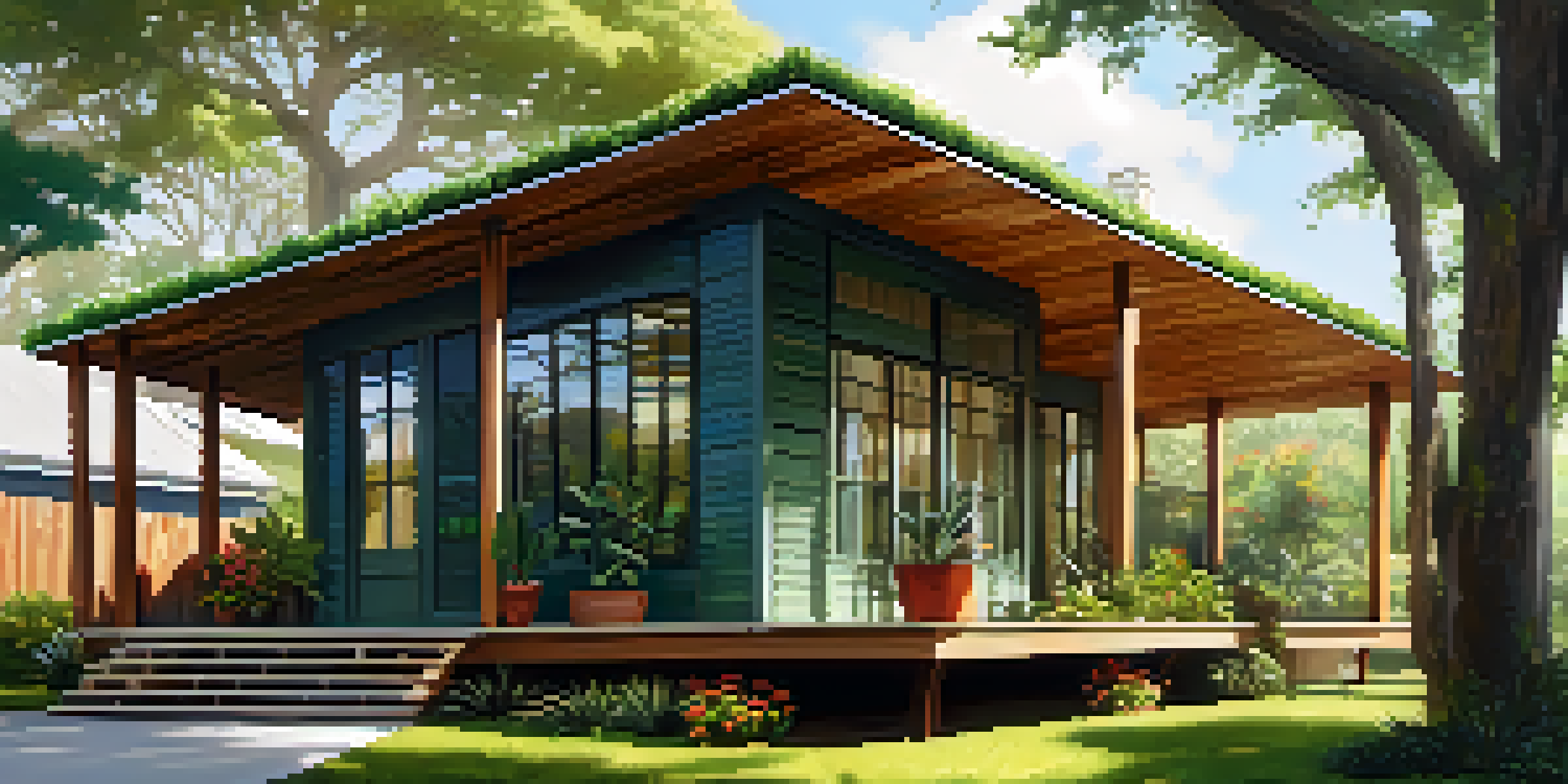The Future of New Orleans Architecture: Trends and Innovations

Embracing Sustainability in New Orleans Architecture
Sustainability is becoming a cornerstone of architectural design in New Orleans. With rising sea levels and increasing temperatures, architects are focusing on eco-friendly materials and energy-efficient buildings. For instance, incorporating green roofs and solar panels not only reduces environmental impact but can also lower energy costs for homeowners.
Sustainability is no longer about doing less harm. It's about doing more good.
Furthermore, sustainable architecture often emphasizes local materials, which not only supports the local economy but also helps in preserving the unique cultural identity of New Orleans. Think of using cypress wood from local sources instead of importing materials from far away. This approach enhances the durability of structures while keeping their character intact.
As the city faces climate challenges, sustainable design will be key to resilient architecture. By prioritizing sustainability, New Orleans can create a built environment that respects its heritage while preparing for a greener future.
Integrating Technology: Smart Homes and Buildings
The rise of smart technology is transforming how we interact with our living spaces. In New Orleans, architects are increasingly incorporating smart home technologies that allow residents to control lighting, heating, and security remotely. Imagine being able to adjust your thermostat from your phone while enjoying a beignet at Café du Monde!

Moreover, these technologies can enhance energy efficiency, helping to reduce costs and carbon footprints. For example, smart sensors can detect when a room is unoccupied and adjust energy use accordingly, which is particularly beneficial in the city's warm climate.
Sustainable Design in Architecture
Architects in New Orleans are prioritizing eco-friendly materials and energy-efficient buildings to combat climate challenges.
As we look to the future, the blending of traditional architectural styles with modern technology will become more common. This fusion can create homes that are not only functional but also reflective of New Orleans’ rich history.
Revitalizing Historic Structures with Modern Design
New Orleans is famous for its historic architecture, from Creole cottages to Victorian mansions. However, many of these structures need revitalization to meet modern standards. Architects are finding innovative ways to preserve historical integrity while introducing contemporary elements, creating a seamless blend of old and new.
The architecture of a city is a mirror of its culture and values.
For example, restoring a historic façade while modernizing the interiors can attract new residents and businesses, breathing life into neighborhoods. This approach not only honors the past but also ensures these buildings remain functional and relevant in today’s urban landscape.
As more people recognize the value of preserving history, expect to see more projects that balance preservation with innovation, fostering a deeper appreciation for New Orleans’ architectural heritage.
The Role of Community in Architectural Development
Community engagement is becoming an essential part of the architectural process in New Orleans. Architects and developers are increasingly seeking input from local residents to ensure that new developments meet the needs of the community. This collaborative approach helps create spaces that reflect the values and culture of the neighborhood.
For instance, projects like the Lafitte Greenway have integrated community feedback to transform underutilized spaces into vibrant parks and pathways. Such initiatives not only enhance the quality of life but also promote social interaction among residents.
Community Engagement in Development
Involving local residents in architectural processes ensures new developments meet community needs and reflect neighborhood values.
By prioritizing community involvement, architects can create more meaningful and inclusive designs. This trend will continue, fostering a sense of ownership and pride among community members in their shared spaces.
Adapting to Climate Change: Resilient Design Strategies
With New Orleans being vulnerable to hurricanes and flooding, architects are focusing on resilient design strategies. This includes elevating buildings to prevent flood damage and utilizing materials that withstand harsh weather conditions. For example, using concrete and steel can help structures endure extreme weather, ensuring safety for residents.
Additionally, urban planning is adapting to include more green spaces that can absorb rainwater and reduce flooding risks. Creating wetlands and parks not only enhances biodiversity but also provides natural stormwater management solutions.
As climate change continues to impact coastal cities, the importance of resilient architecture will only grow. By implementing these strategies, New Orleans can safeguard its future while maintaining its unique charm.
Cultural Influences Shaping Future Designs
New Orleans is a melting pot of cultures, and this diversity is reflected in its architecture. As we look to the future, expect to see more designs that celebrate this rich cultural heritage. Architects are inspired by the city’s vibrant music, art, and culinary scenes, creating spaces that resonate with its unique identity.
For instance, incorporating elements like traditional wrought iron balconies or colorful facades can evoke the essence of the city while still embracing modern functionality. This approach not only honors the past but also attracts visitors and residents alike, enriching the urban experience.
Resilient Strategies for Climate Change
Architects are implementing resilient design strategies to protect structures from hurricanes and flooding, ensuring safety for residents.
As cultural influences continue to weave into architectural designs, New Orleans will remain a distinctive place where history and modernity coexist beautifully.
The Future of Public Spaces in Urban Architecture
Public spaces play a crucial role in urban architecture, offering areas for community gathering and interaction. In New Orleans, architects are reimagining parks, plazas, and streetscapes to enhance social connectivity and improve quality of life. Think of vibrant markets or lively street performances that bring people together.
By designing multifunctional public spaces, cities can cater to various activities, from recreational use to cultural events. This not only boosts community engagement but also promotes local businesses, creating a thriving urban ecosystem.

As the demand for inclusive and accessible public spaces grows, expect New Orleans to lead the way in innovative urban design that prioritizes community and connectivity.